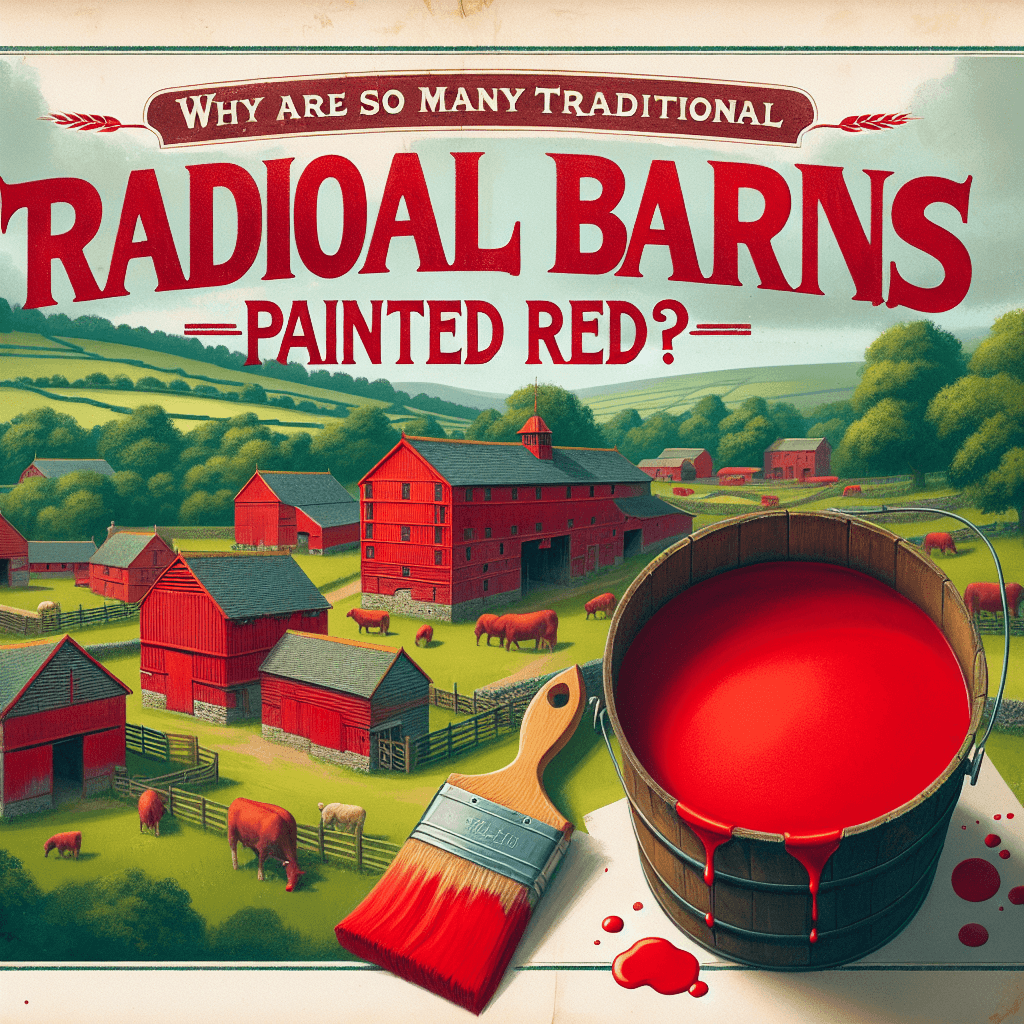Why are so many traditional barns painted red
That iconic red color wasn't a choice of style, but of science—it's a fascinating tale of resourceful farmers, rust, and an ingredient forged in the explosive heart of a star.


Too Long; Didn't Read
TLDR: Farmers historically used a cheap, protective sealant made from linseed oil and rust. The rust gave the paint its red color, killed fungi, and sealed the wood from the elements. The color simply became a tradition.
From Rust to Icon: Why Are So Many Traditional Barns Painted Red?
Picture the American countryside. What do you see? Rolling hills, green pastures, and almost certainly, a large, sturdy barn painted a deep, traditional red. This image is so ingrained in our culture that we rarely stop to ask a simple question: why that specific color? The choice was far from random; it's a fascinating story of chemistry, thrift, and tradition. The iconic red barn isn't just an aesthetic choice but a practical solution born from the ingenuity of early farmers. This post will uncover the historical, scientific, and cultural reasons behind this enduring agricultural symbol.
The Chemistry of Frugality: A Homemade Sealant
Long before commercial paint was affordable or widely available, farmers needed a way to protect their wooden barns from the elements. Wood, left untreated, is susceptible to rot, decay, and damage from insects and fungi. To solve this, farmers created their own protective sealant using ingredients they had on hand.
The recipe was simple and resourceful, often consisting of:
- Linseed oil: Pressed from flax seeds, this oil acted as a binder and helped the mixture penetrate the wood.
- Skimmed milk or buttermilk: The casein protein in milk also served as a binder, making the sealant more durable.
- Lime: This was often added to help control mildew and harden the coating.
- Ferric oxide (Fe2O3): This was the key ingredient. More commonly known as rust, ferric oxide was a plentiful and cheap pigment that farmers could add to the mixture.
This rust was a powerful addition. It was known to kill fungi and mosses that could degrade the wood, and it helped seal the pores of the timber to protect it from moisture. Critically, adding large quantities of rust to the linseed oil mixture turned the sealant a deep, earthy red or reddish-brown color. The first red barns weren't red for style; they were red because they were coated in rust.
The Science of Solar Heat
Beyond preservation, the deep red color offered a surprising scientific benefit. Darker colors absorb more light and heat from the sun. In the colder climates where many of these barns were built, this was a significant advantage. The red paint helped absorb solar rays throughout the day, warming the barn's interior.
This passive solar heating was crucial for several reasons. It created a warmer, more comfortable environment for livestock during harsh winters. It also helped to cure hay and dry crops that were stored inside, preventing spoilage and ensuring the farm's resources lasted until the next season. A red barn was, in essence, a more efficient building.
From Practicality to Tradition
As the years passed and the Industrial Revolution made manufactured goods more accessible, the original reason for red barns began to fade. Farmers could now buy pre-mixed paint. However, by this point, a powerful tradition had already taken root.
Red paint, historically derived from cheap rust, remained one of the least expensive and most durable color options well into the late 19th and early 20th centuries. Farmers, ever practical, continued to choose the most cost-effective option. Over generations, this practical choice evolved into a cultural symbol. A bright, well-maintained red barn became a visual sign of a prosperous and successful farm. It was a proud declaration of a farmer's hard work and a landmark of rural American life, a tradition that was also reinforced by Scandinavian immigrants who brought their own tradition of using a similar copper-based red paint (Falu red) on their buildings.
A Legacy Painted in Red
So, the next time you drive past a classic red barn, you'll know its color is more than just a quaint choice. It represents a legacy of farmer ingenuity, a smart application of basic science, and a deep-rooted cultural tradition. That simple coat of paint tells a rich story of making the most of what you have, protecting valuable assets, and building an enduring symbol of American agriculture. The red barn stands as a testament to the idea that the most practical solutions are often the ones that become the most beautiful and iconic traditions.


